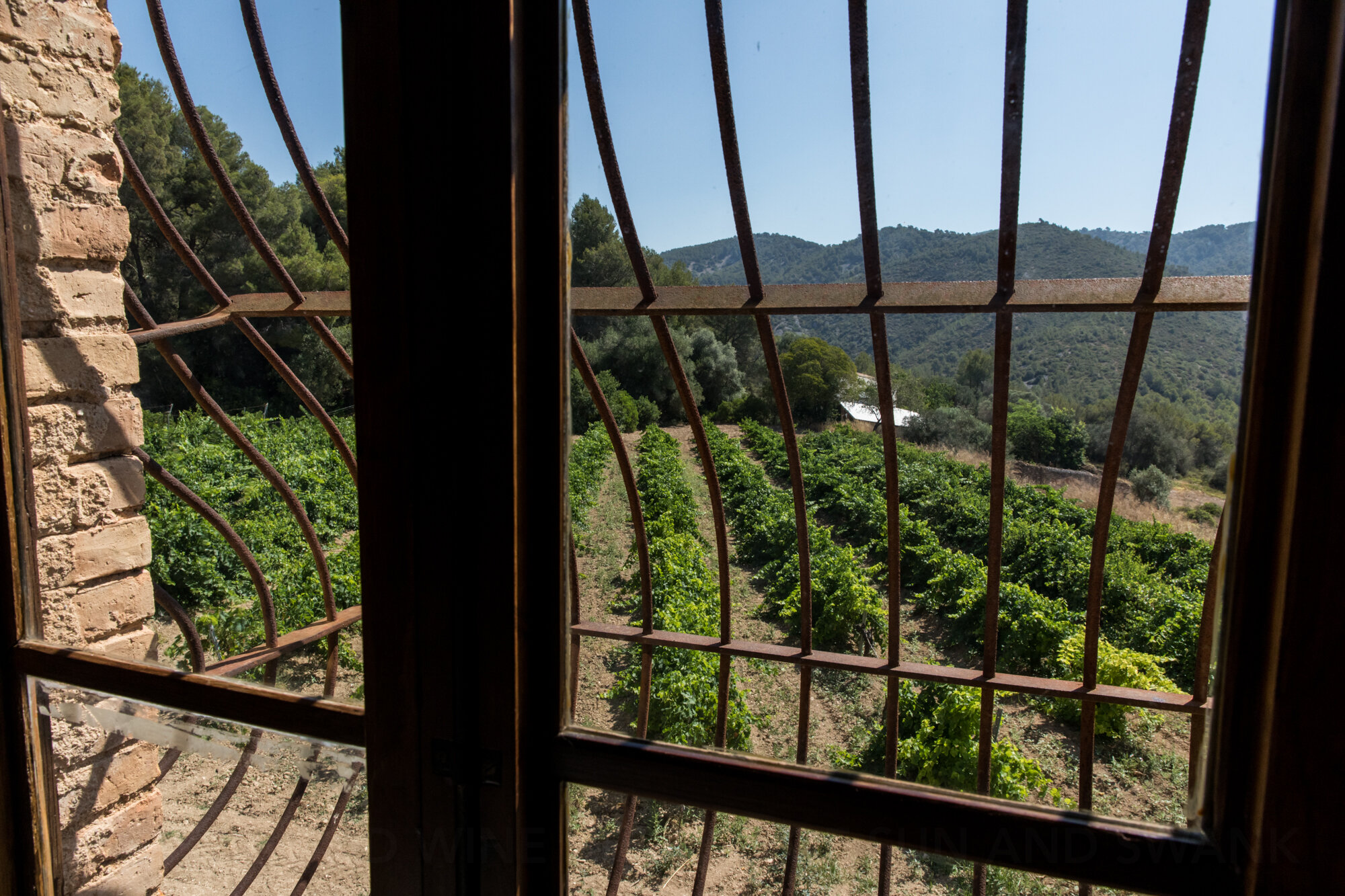CAN RÀFOLS DELS CAUS
This piece is part of our series on Penedès, one of the great wine regions of Spain. We visited in July 2019.
After two culturally immersive weeks in Barcelona, where we drank enough Barcelona Water (Cava) to keep us fully hydrated in the summer heat, it was time to move on to the second stage of our Spanish journey: Penedès and a thorough discovery of Cava wine.
We visited four very different wineries:
What a technological wonder lies underneath this historic winery and villa.
VESTIGES OF ANCIENT ROME
The Massís del Garraf, the mountains of Catalan’s Mediterranean coast, surround the seaside village of Sitges and separate it from the wide valley known as the Penedès wine region.
Here lies this gorgeous old 3rd century Roman villa and all its many surprises.
Just 12 kilometers from the sea and 3km from the valley floor in Penedès, near the original Via Augusta connecting Rome to the province of HIspania, the land here rested fallow when it was abandoned for 70 years at the end of the 18th century.
A UNIQUE CATALAN WINERY
A Barcelona filmmaker bought these 450 hectares in 1930, and the land waited another 4 decades before the filmmaker’s grandson Carlos Esteva moved here and began making wine in 1979. He began by planting Bordeaux varietals, but over the years the winery has come to embrace the local varietals as well. They harvest 28 varieties every year for their 15 wines, 4 of them Cavas.
The winery and vineyards of Can Rafols dels Caus sit 400m in elevation just 12 km from the Mediterranean. Light saline breezes cool off the hills at night in the summer. Underneath just 7cm of topsoil, a hard fossil-rich calcareous rock (chalky calcium carbonate, also known as limestone) presents a challenge for the thirsty vines. Down below, in Penedès, the vines enjoy more than two and a half feet of topsoil.
Can Rafols dry-farms their vineyards, so the yields are very low, only about a third of what’s allowed. The yields here are just 4kg per hectare (white) and 3kg per hectare (red).
ABOVE GROUND
Above ground: the vineyards, and the gorgeous family home. Also pictured: the stone doors leading into the winemaking facility.
An an ancient Roman road runs through the property.
BELOW GROUND
Below ground, a state of the art cave production facility carved into the rock, completely gravity-driven.
A HEROIC TASTING OF UNIQUE WINES
And now, meet Lluba (pronounced YOO-buh), our wonderful guide for the afternoon. She showed us the bottom floor of the restored home, even letting us peek up the gorgeous old staircase.
So many passages to explore. Check out the sink carved and polished out of a single piece of rock.
And now: Can you believe this tasting room? It’s the villa’s old kitchen, with windows overlooking the vineyards, and a mountain Esteva (the owner) bought rather than allow Catalan authorities to turn into a gravel pit.
Lluba led us to a table set with glasses, a gorgeous spread of local tomatoes, cheese, and sausages, and a basket of fossils found in the local limestone vineyards.
Then, she took us through a wonderful flight of Can Rafols wines, including a single varietal red wine made from a resurrected ancient grape of the Massíf del Garraf, Sumoll. She expected us to identify it as Pinot Noir, but we were too wily. Jake guessed correctly it was a local varietal of some kind.
Also notable: the rosé Cava, and the stunning, minerally Terraprima, a bone dry blend of the local white grape Xarel●lo and the German white grape Riesling. Terraprima is the property saved from becoming a gravel pit, and its vines are eight decades old. The wine blew our doors off.
Can Rafols ages Sumoll and other local red grapes in chestnut! Three of the still wines are aged only in the bottle, imparting the purest flavor of the grapes. The flagship wine is the Gran Caus Reserva, a Bordeaux-inspired blend of Merlot, Cabernet Franc, and Cabernet Sauvignon.
PA AMB TOMÀQUET
Lluba also showed us how to make the Catalan appetizer pa amb tomàquet. We were smart enough to document a video of the process, below.
Patrick wrote a separate article here.
Here’s some more shots of the property and the wines, including the beautiful retail shop, and a gigantic 8-foot-diameter stone sphere that is oddly easy to rotate with your hands.
What a day. We will never forget it!

















































